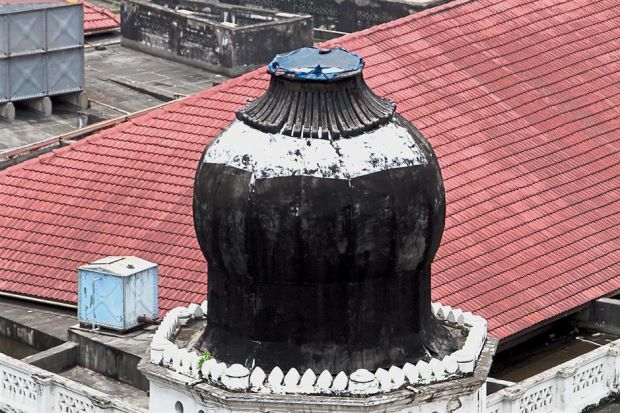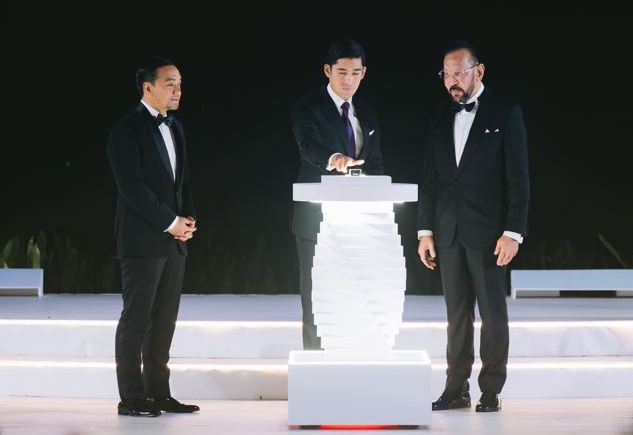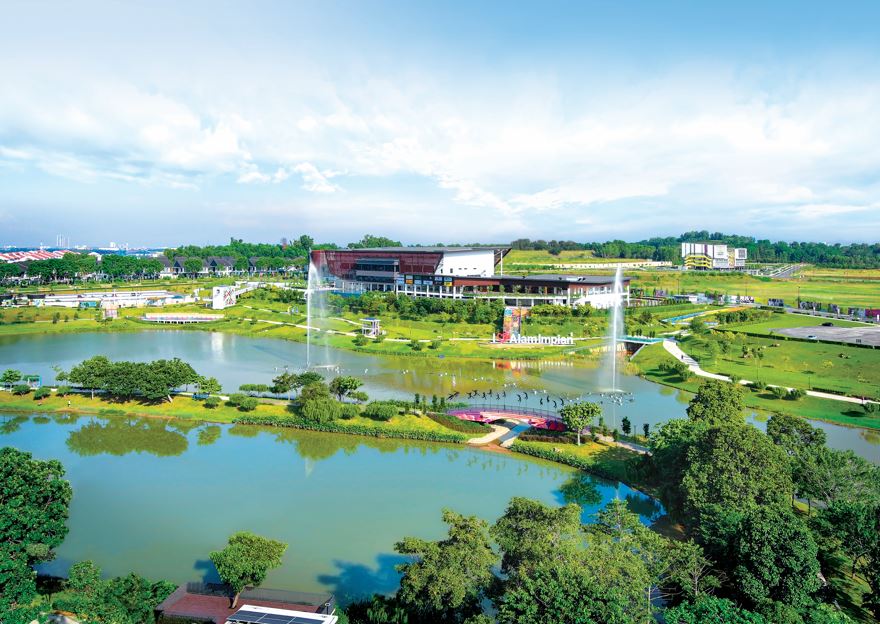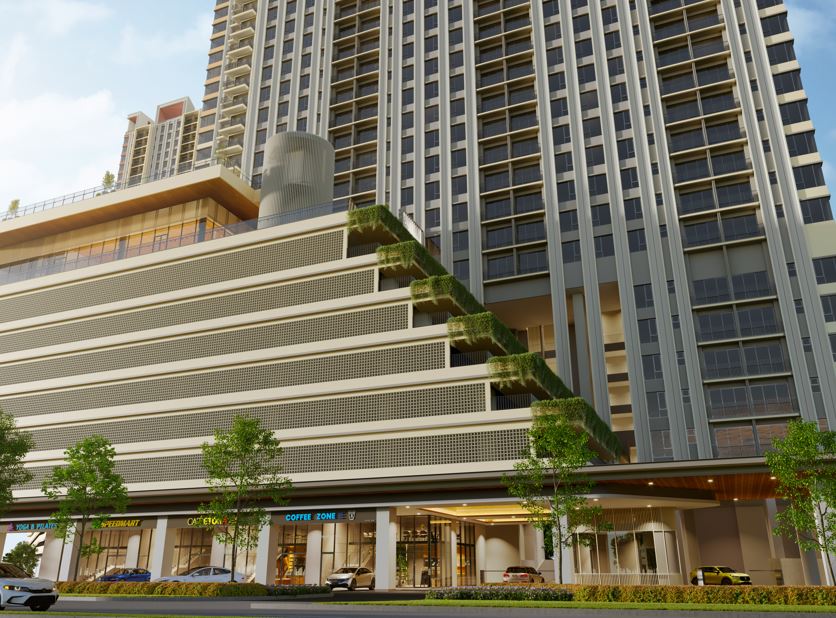BY BAVANI M
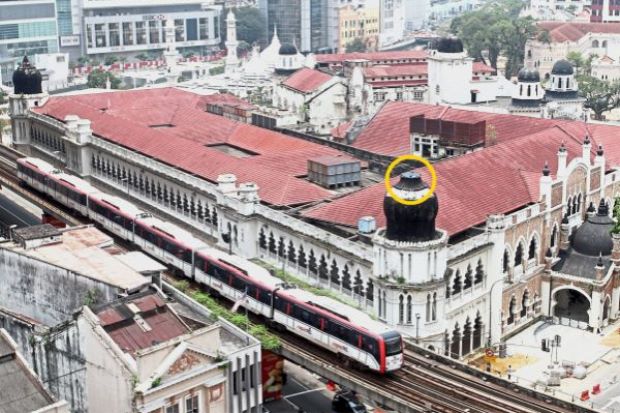
Contrast of the old and new: A Light Rail Transit (LRT) passing next to the 108-year-old former Federated Malay States (FMS) Survey Department building. The spire on one of its domes (in yellow circle) collapsed late last year and the rest of the building also appears to be in a poor state. — FAIHAN GHANI/ The Star
Once, the pride of the Federal Capital, is now in a sorry state and slowly falling apart in the heart of one of Kuala Lumpur’s famous tourist spot — Jalan Raja.
Each day, busloads of tourists get dropped off along the famous road which is home to the iconic Sultan Abdul Samad building and Dataran Merdeka. But along that very same backdrop lies another equally majestic building — the former Federated Malay States (FMS) Survey Department headquarters.
Built in 1910, the FMS Survey office building went through many restorations and refurbishments in the past century, with its last beautification project in 2009 being its copper domes.
But late last year, one of the dome’s spires collapsed, raising warning flags on how fragile the heritage buildings in the area are.
Sadly, parts of this heritage building are neglected and in a state of decay.
Forgotten relic
Nestled between the junction of Jalan Tun Perak (formerly Java Street) and Jalan Raja, the pointed tip of one of the FMS domes collapsed late last year, after a downpour.
To ensure public safety and to prevent further damage to the building, Kuala Lumpur City Hall (DBKL) cordoned off the area with cone barriers and covered the dome with a tarpaulin sheet.
But gaps in between the eroding rooftops have exposed the building to the elements, and the entire place is deteriorating by the day.
During a recent visit, StarMetro found the building in a sorry state.
Tiles lay broken everywhere, the walls were covered with mold, the grilles rusting on its hinges, and rubbish was strewn all over the place.
Unlike pre-war shophouses in the vicinity, the building is gazetted a national heritage under Category One of the National Heritage Act 2005.
This means that it is deemed a building of exceptional interest; to be conserved as close as possible to its original state, and repairs to be carried out using authentic traditional ways of building methods and materials.
According to a spokesman from DBKL’s Project Implementation and Building Maintenance Department, the building belonged to the Tourism and Culture Ministry. Last year, DBKL was presented with the option to manage the place.
“The place was already looking shabby and was in a sorry state, but we were excited to put it to good use. There was so much potential of what could be done to bring it back to its former glory,” said the spokesman.
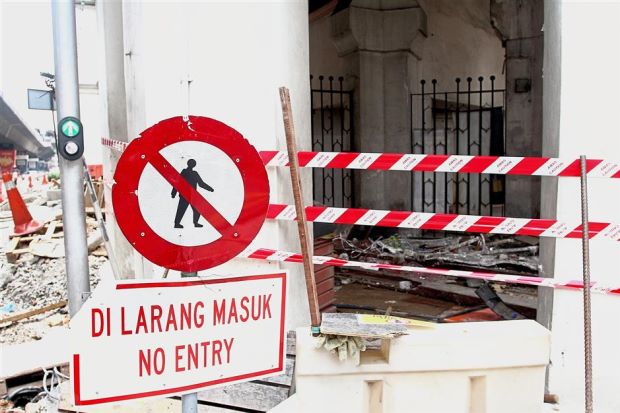
After a dome spire from the 108-year-old building collapsed late last year, questions have been raised on the condition of similar buildings in the area. — Photos: MOHD FAIHAN/The Star
DBKL planned to turn the building, which used to house the old sessions and federal courts in the 1980s before it moved to Putrajaya, into an art gallery.
“There was even a proposal for it to be transformed into a town hall building, a sort of meeting place for visiting mayors,” said the spokesman.
“We appointed a heritage conservator to assess the condition of the building and we received proposals from various interested parties who wanted to manage the place.
“But suddenly we received instructions, last December, that the Tourism Ministry wanted the building back to accommodate the Kuala Lumpur Craft Complex traders who were displaced from Jalan Conlay,” he added.
After that, plans for the building were put on the back burner and the building has been left unattended for months.
Sad state of affair
A heritage consultant, engaged by DBKL to carry out a Dilapidation Survey Report on the building, said water ponding on the roof’s discharge outlet has not been well maintained.
“This resulted in many blockages that let rain water seep into the building and rot the timber structure which eventually failed at the first floor octagon tower,” the consultant said.
“If not addressed quickly, the same thing will happen to the domes of other heritage buildings, in the area, including the Sultan Abdul Samad building,” added the consultant.
Malaysian Institute of Architects (PAM) past president Saifuddin Ahmad described the heritage building’s situation as “very sad”.
“Most of the buildings along Jalan Raja belong to the Tourism Ministry and are gazetted heritage structures; but the sad part is how could the ministry’s heritage custodian, the National Heritage Department (JWN), allow it to come to this state,” Saifuddin said.
“The collapse of the spire was bound to happen as with all old buildings in the city that are not maintained properly.
“But these are mere administrative issues and government agencies must work together to stop further decay of such buildings.
“There should be a platform to address or a committee formed to keep an eye out for these old structures.
“The longer you wait, the faster the building will erode and more money will be required to fix the building,” Saifuddin said.
Government initiatives
In the past 10 years, DBKL has spent a lot of money to preserve the city’s old charms, putting initiatives in place to keep areas with historical value intact.
The local authority carried out periodic inspections by serving painting and cleaning notices to the building owners to ensure they maintained and retained their heritage-value premises.
DBKL also carried out upgrading and beautification programmes along the KL Heritage Trail and Medan Pasar involving repainting and rearranging signage and enhancing lighting impact on the building façade, among others.
Most of the colonial buildings in Jalan Raja have been gazetted national heritage buildings under the 2005 Act.
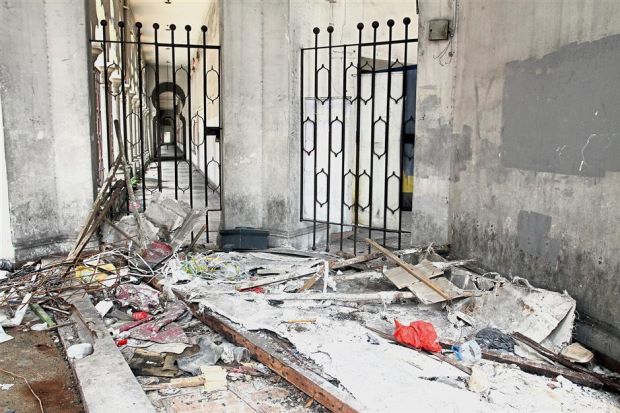
Debris and rubbish left to collect around the heritage site. Some of it may even be breeding ground for mosquitoes.
The buildings in Medan Pasar, Leboh Ampang and Jalan Tun Perak are located in the Secondary Heritage Zone under the Kuala Lumpur City Plan 2020.
Some of the buildings have been separated as Category 3 heritage buildings, which means the original façade has to be conserved.
For non-heritage buildings within the Secondary Heritage Zone, the architectural elements and character are retained.
The government also launched its River of Life project in 2012 involving three main components: river cleaning, river master-planning and beautification.
The river rehabilitation project is set to rejuvenate the city’s river and reconnect it to the surrounding urban fabric, transforming the river into a vibrant waterfront of high economic and commercial value.
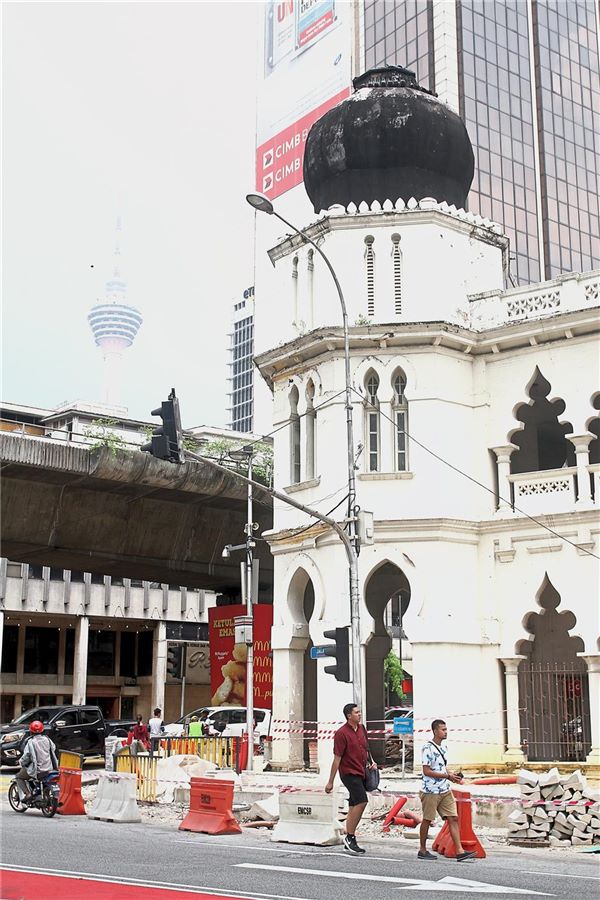
A part of the road in front of the building was cordoned off for safety reasons. But little had been done since to clear the debris.
Part of that are urban regeneration projects under Think City, to bring life to Kuala Lumpur’s old commercial centres like Medan Pasar and the Masjid Jamek area.
DBKL, on the other hand, also runs free guided tours along historic locations like Jalan Raja that are designed to give an insight to tourists on how the colonial part of Kuala Lumpur came into being.
This old section of the city is now an important historical enclave and a must-visit for all historical and cultural enthusiasts when in Kuala Lumpur.
The heritage walk takes tourists to 11 historical sites within the vicinity of Dataran Merdeka where the bulk of their colonial buildings are located and sadly many of the structures are already slowly decaying.
[slider id='81590' name='StarProperty' size='full']
Follow us on Wechat or Facebook for the latest updates.
Download StarProperty.my e-Mag(bit.ly/StarProperty_Emag) for more articles.
Want to contribute articles to StarProperty.my? Email editor@starproperty.my.


